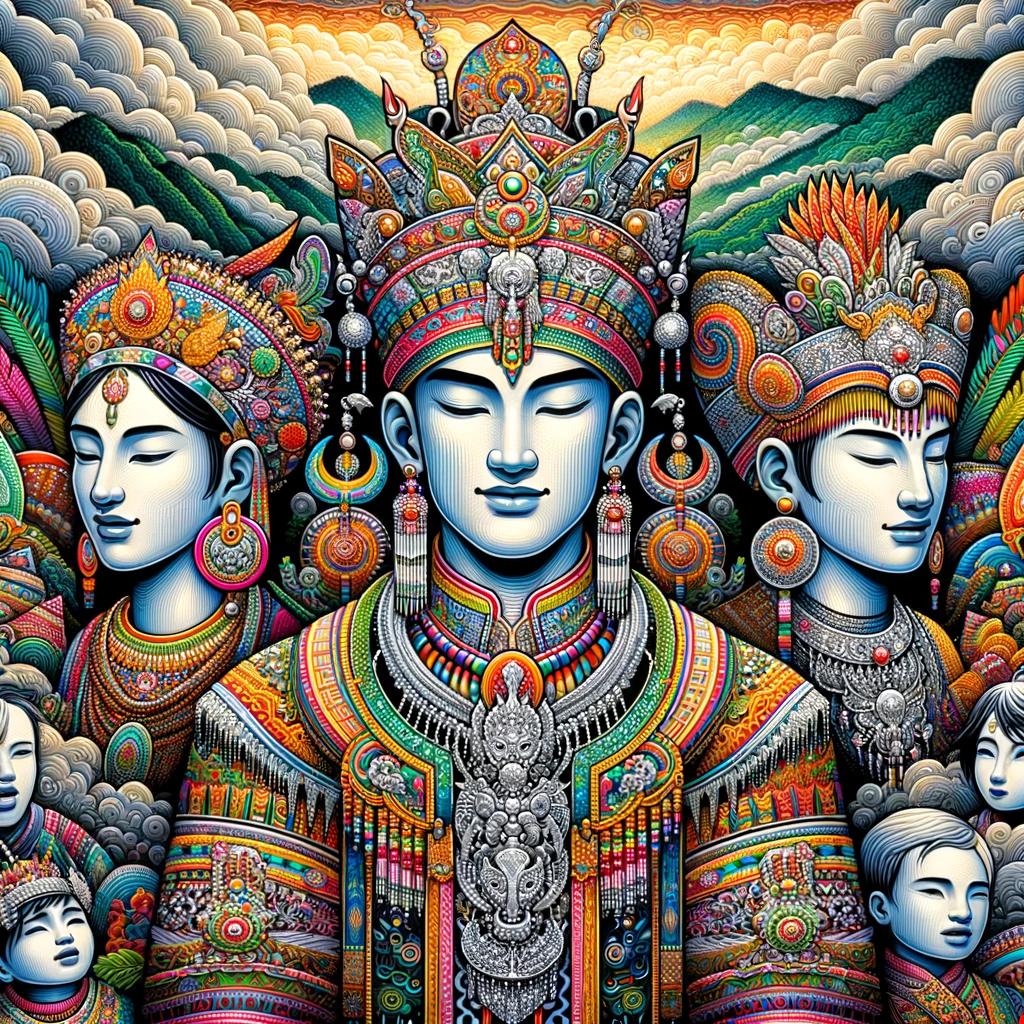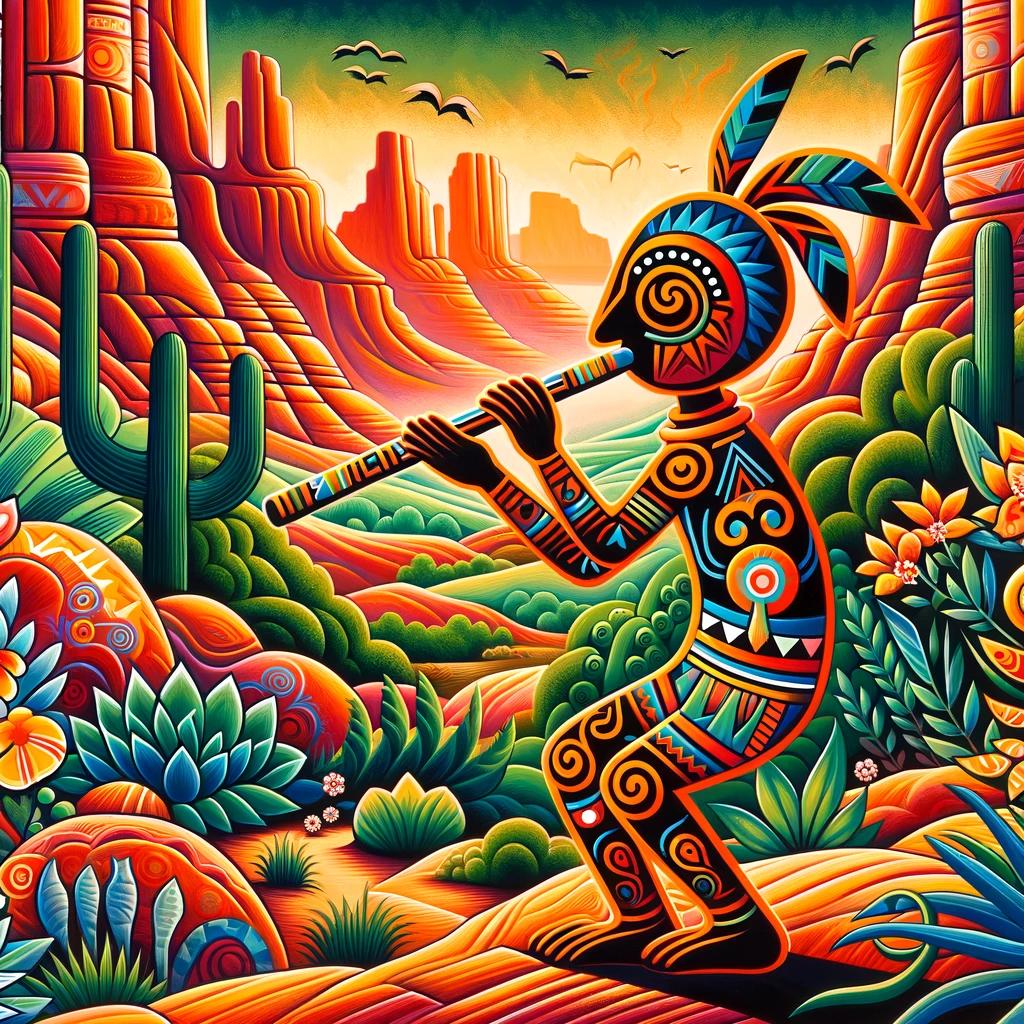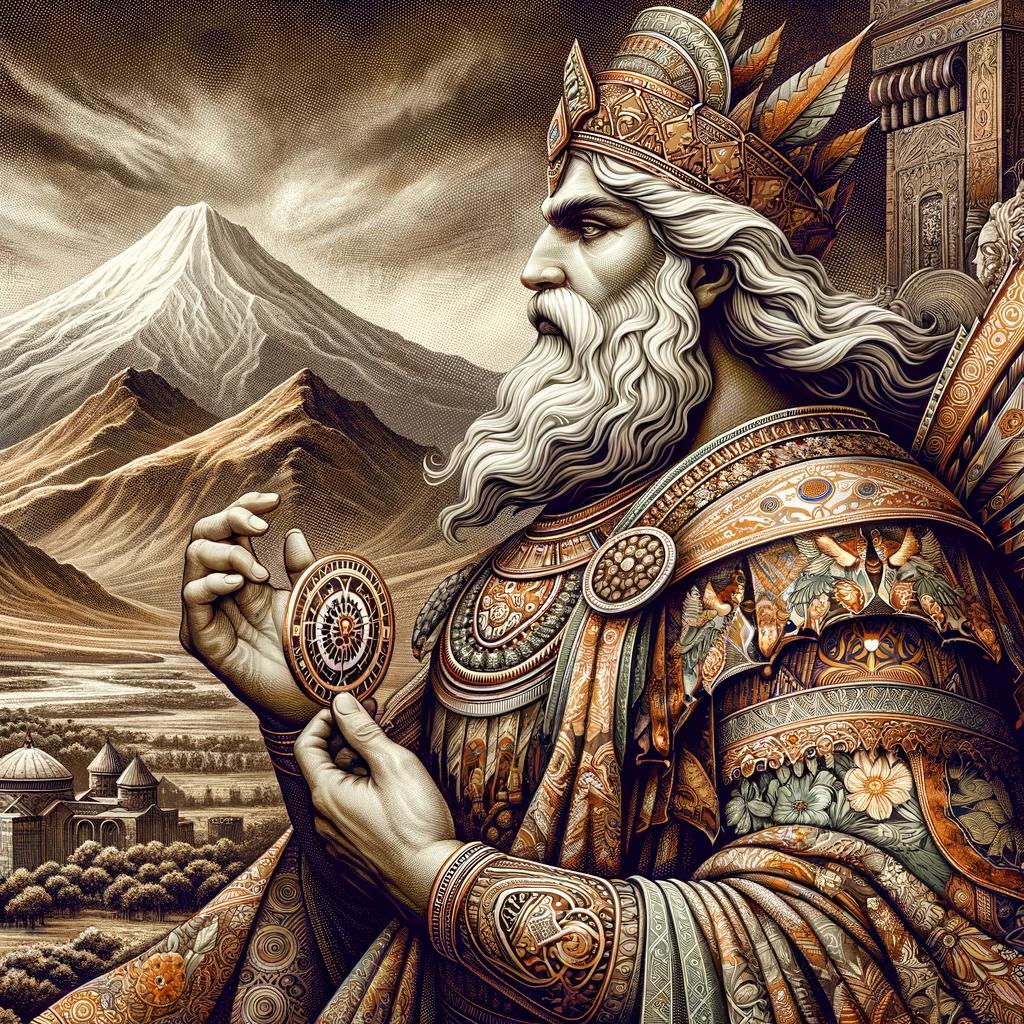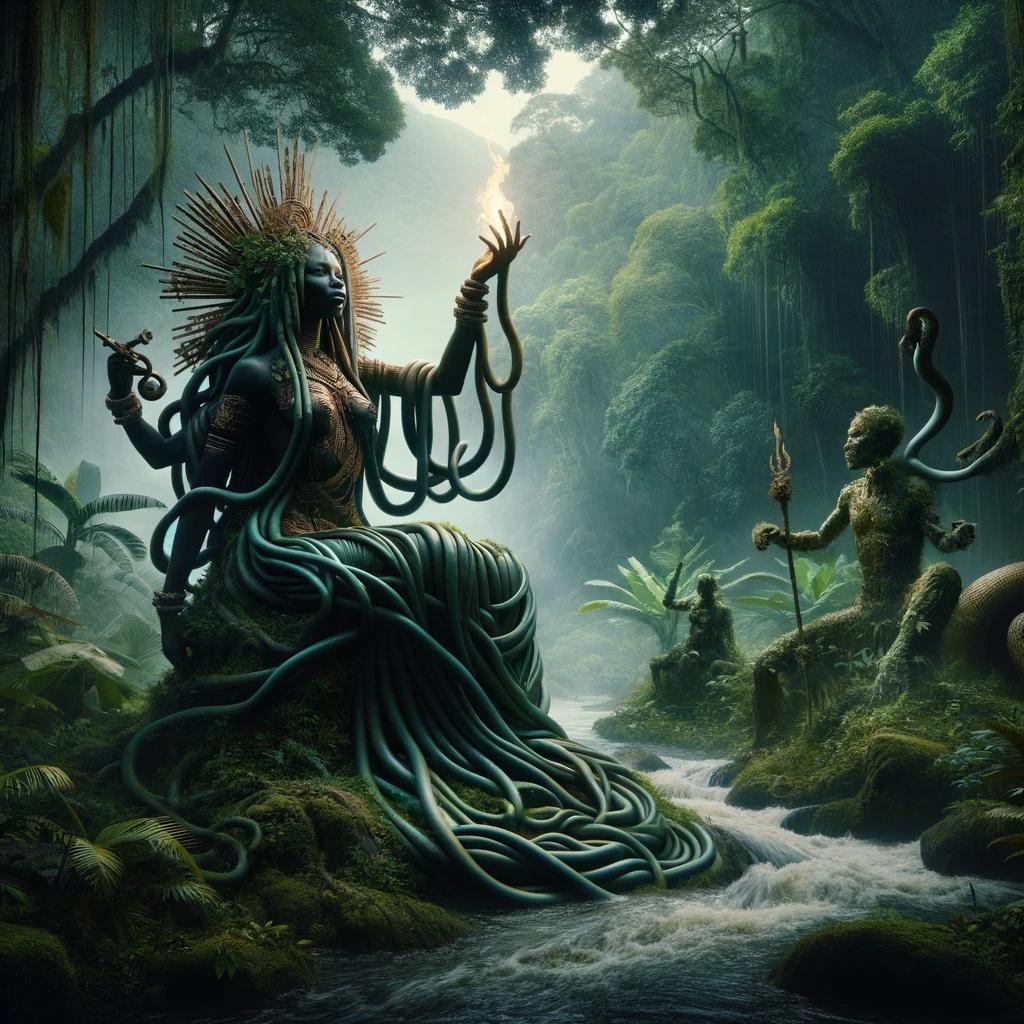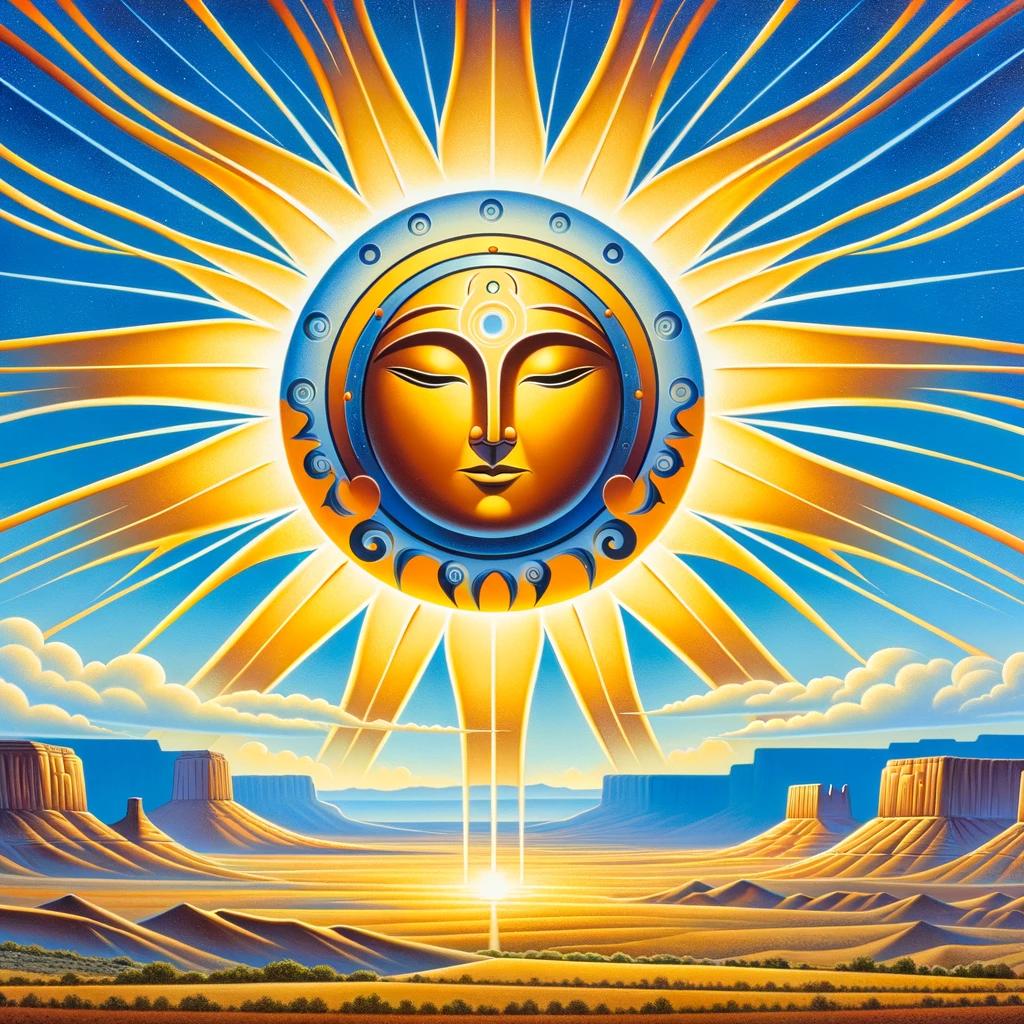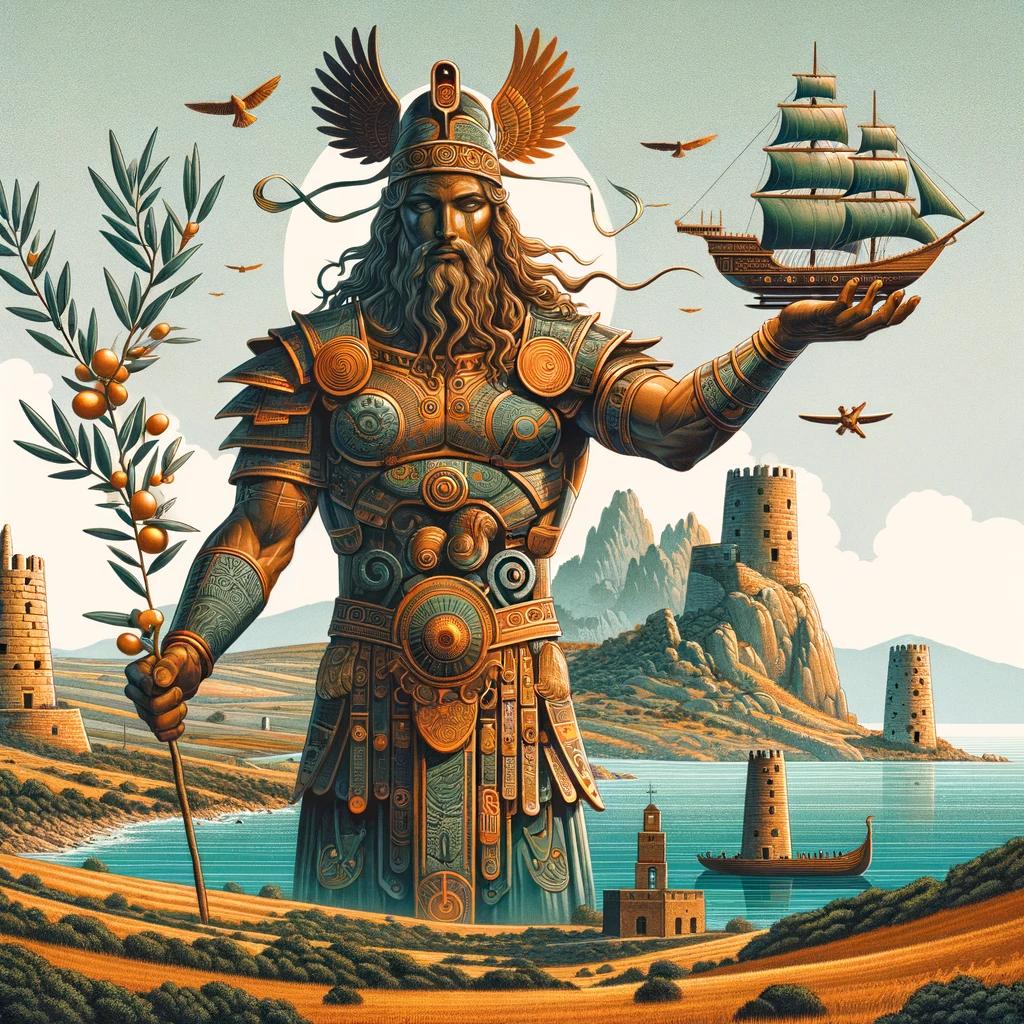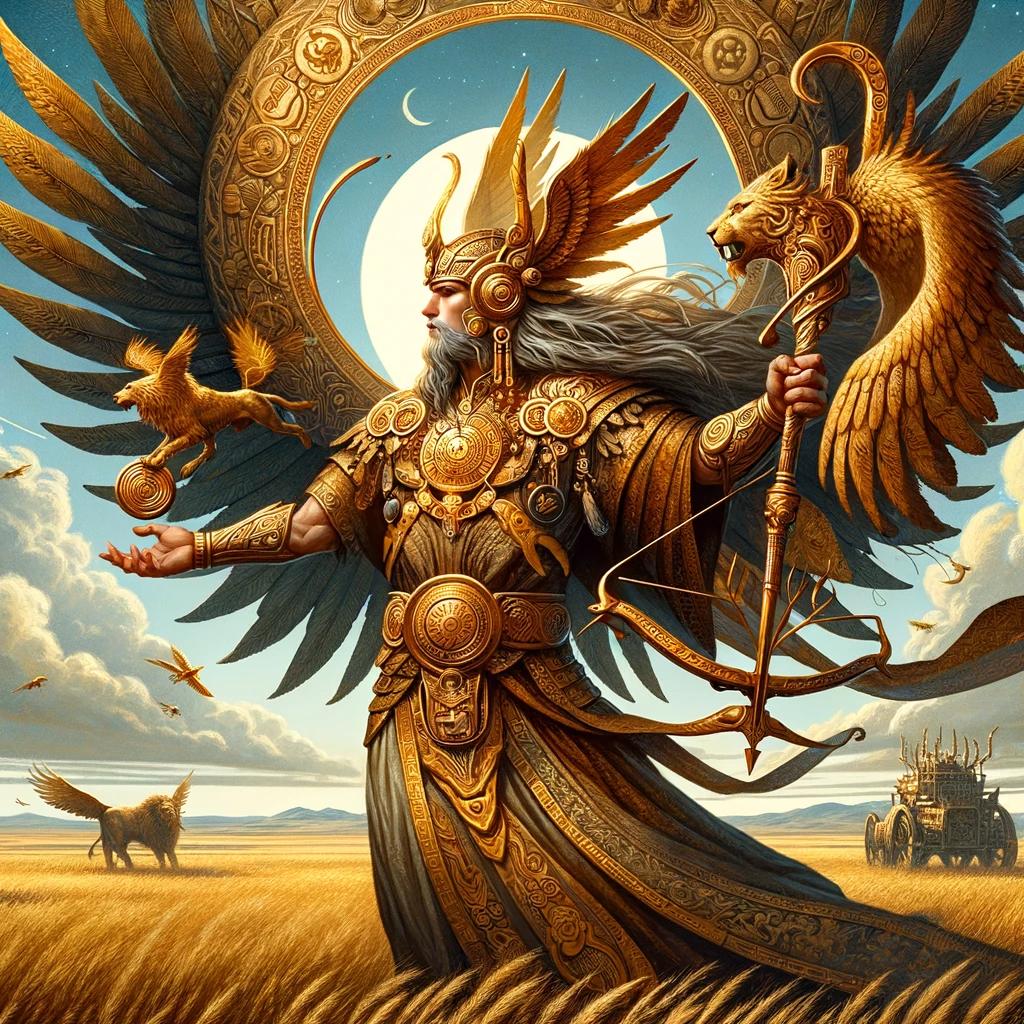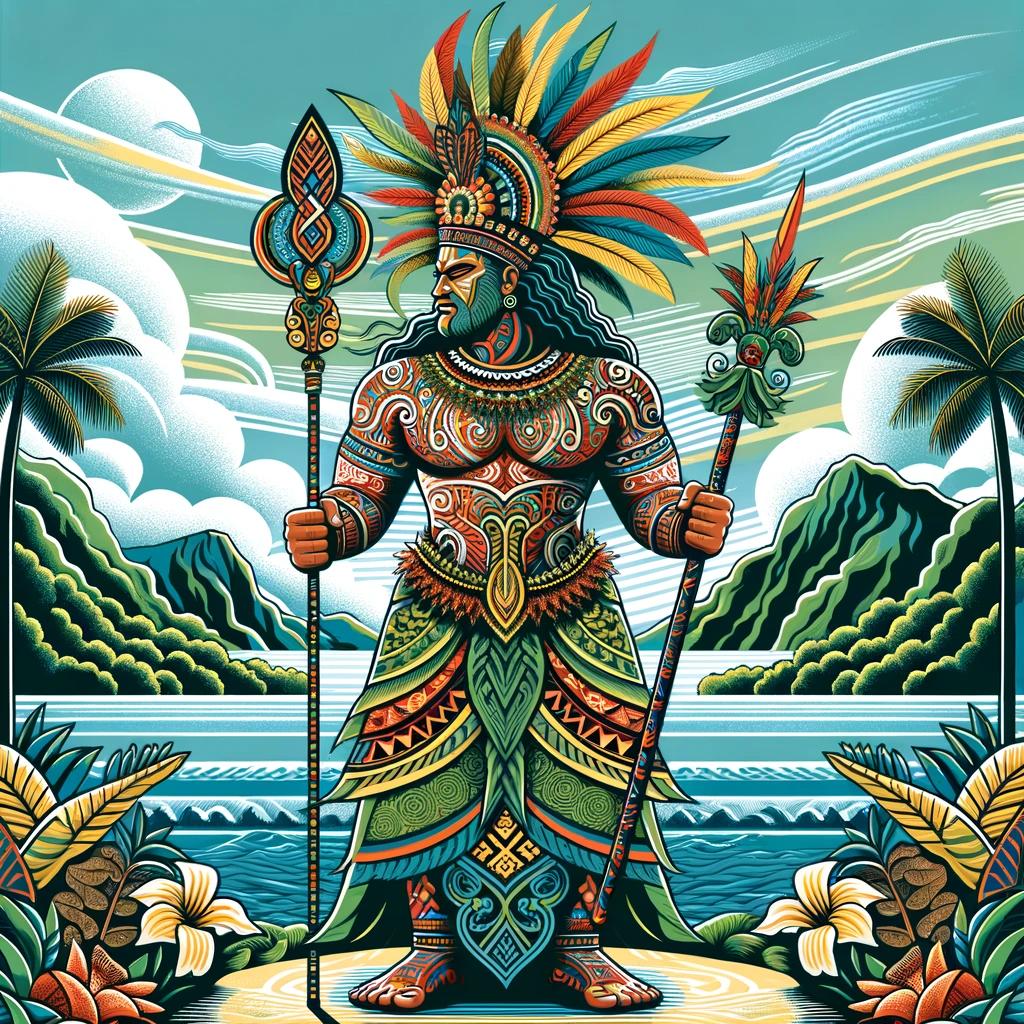Exploring Hmong Mythology: The Gods and Goddesses
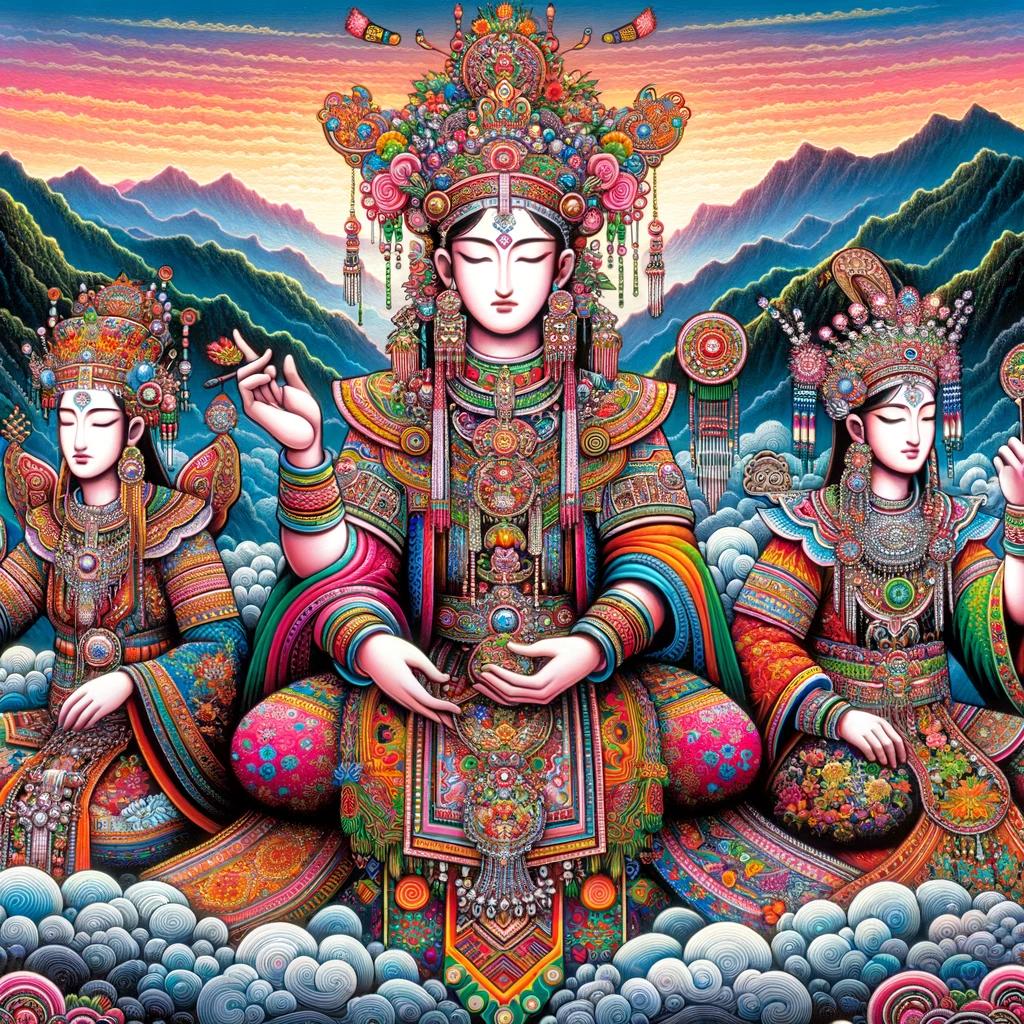
Hmong mythology gods and goddesses play a significant role in the rich cultural traditions of the Hmong people. This ancient belief system encompasses concepts of reincarnation, ancestral worship, and a spiritual world.
Rituals, led by shamanic practitioners, provide a medium for communication with spirits and seek guidance. The mythology also shapes various aspects of daily life, including house construction and healing practices. In contemporary times, representations of Hmong mythology can be found in literature, media, and adaptations in popular culture.
Explore the fascinating world of Hmong mythology and its enduring influence on culture and identity.
Overview of Hmong Mythology
The mythology of the Hmong people is a rich and intricate system that permeates their daily life and cultural practices. It encompasses a wide range of beliefs and concepts, a spiritual world filled with gods and goddesses, and a variety of worship and ritual practices.
Beliefs and Concepts
- Hmong mythology is rooted in the belief of reincarnation, where souls go through multiple lives in various forms.
- An important belief within Hmong mythology is the notion of an “ancestral line,” which suggests that souls are reborn within the same family lineage.
- This belief reinforces the significance of ancestral worship, as the spirits of ancestors are believed to be directly connected to the souls of their living descendants.
Hmong Spiritual World
In Hmong mythology, the spiritual world is a prominent aspect, intricately connected with the physical world.
The spiritual realm is represented by the roof of the house, while the physical realm is symbolized by the ground.
Worship and Rituals
Rituals play a significant role in Hmong mythology, serving as a means of communication with spirits and seeking guidance. Shamanic practices are integral to these rituals, with shamans entering a trance-like state to connect with spirits and perform healing rituals or receive messages.
Various tools, such as drums, rattles, and incense, are used by the shamans to aid in their communication with the spiritual realm.
Hmong Creation Myth
The Hmong creation myth encompasses the origin story of the universe and the Hmong people. According to this myth, the world was created by the Ser Creador, the Creator, who shaped the earth, sky, and all living creatures.
The Ser Creador is revered as the supreme being in Hmong mythology, responsible for the existence of the universe and all its inhabitants.
In the Hmong creation myth, the Ser Creador crafted the first humans, Ya and Nyab, who became the ancestors of the Hmong people.
Their descendants spread across the land, forming various Hmong clans and communities.
Hmong mythology also includes the concept of Yer Shau, the ancestral spirit. Yer Shau is believed to have a special connection with the human realm and is responsible for guiding and protecting the Hmong people.
It is said that Yer Shau is capable of manifesting as a human and possesses traits such as eating, drinking, and engaging in conversations with friends.
Another significant figure in Hmong mythology is Ndu Nyong, the demon god.
Ndu Nyong is portrayed as a malevolent deity who delights in devouring human souls. The Hmong believe that humans have multiple souls, and Ndu Nyong poses a threat to these souls.
In order to safeguard the human souls, animal sacrifices are performed as offerings to appease Ndu Nyong and protect the souls from his grasp.
The Hmong creation myth emphasizes the ongoing struggle between Ndu Nyong and the Hmong people.
Yer Shau, in response to this threat, bestowed upon humans the gift of shamanism. Through shamanistic practices, selected shamans enter a trance-like state to communicate with spirits and retrieve lost souls, effectively combating Ndu Nyong in his own domain.
Shamanic rituals, often involving animal sacrifices, serve as a means to establish a connection with the spiritual world and seek guidance from ancestral spirits. These rituals play a vital role in Hmong mythology, serving as a channel for communication, healing, and protection against malevolent forces.
3. Gods and Goddesses in Hmong Mythology
The Ser Creador (Creator)
In Hmong mythology, the Ser Creador, also known as the Creator, holds a significant role. This deity is believed to have created the world and all living beings within it. The Ser Creador is seen as the ultimate source of life and the one who established the natural order of the universe.
Hmong people offer prayers and rituals to honor and seek guidance from the Creator, recognizing their connection to this divine being.
Yer Shau, the Ancestral Spirit
Yer Shau is an essential figure in Hmong mythology, representing the ancestral spirit. Considered an intermediary between humans and the spiritual realm, Yer Shau is seen as an ancestral protector and guide.
Living among humans, Yer Shau possesses human-like qualities and can manifest in physical form. Hmong people offer prayers and sacrifices to Yer Shau to gain blessings, protection, and support in their daily lives.
Ndu Nyong, the Demon God
One of the prominent deities in Hmong mythology is Ndu Nyong, the Demon God. Ndu Nyong is depicted as a malevolent force that enjoys devouring human souls. According to Hmong beliefs, humans possess multiple souls that can be threatened by Ndu Nyong.
To protect these souls, elaborate rituals and sacrifices involving animals are performed as offerings to appease Ndu Nyong, ensuring the safety of human souls from being consumed.
Other Deities and Spirits
- Aside from the Ser Creador, Yer Shau, and Ndu Nyong, Hmong mythology encompasses numerous deities and spirits.
- These include guardian spirits associated with natural elements, such as forests, mountains, and rivers.
- Deities and spirits are believed to have specific powers and responsibilities, acting as intermediaries between humans and the spiritual realm.
- Offerings and prayers are made to these deities and spirits to seek their assistance, blessings, and protection.
Connection to Ancestors
The connection to ancestors holds immense importance in Hmong mythology, encompassing various aspects such as ancestral worship, ancestral lineage, and the role of shamans in communicating with ancestors.
Through these practices, the Hmong people maintain a deep spiritual link with their forefathers, believing that the spirits of their ancestors are directly interconnected with their own souls.
Ancestral Worship
Ancestral worship is a core belief in Hmong mythology, as it acknowledges the role of ancestors as guardians and guides. Hmong families often set up altars and offer prayers, incense, and food to honor their ancestors.
The ancestral altar serves as a sacred space for communion with departed spirits and expressing gratitude for their protection and blessings.
Ancestral Lineage and Reincarnation
Hmong mythology embraces the concept of ancestral lineage and reincarnation, believing that souls are reborn within the same family line. This idea reinforces the significance of ancestral worship, as it is believed that the spirits of ancestors are closely tied to the souls of their living descendants.
The belief in reincarnation further emphasizes the eternal connection between past and present generations.
Role of Shamans in Communicating with Ancestors
Shamans play a vital role in Hmong mythology, acting as intermediaries between the living and the spiritual realm. They enter trance-like states, connecting and communicating with the spirits, including ancestors, to seek guidance, perform healing rituals, or receive messages.
Shamans employ various tools such as drums, rattles, and incense to facilitate communication with the spirits and fulfill their sacred duties.
Hmong Mythology in Daily Life
The influence of Hmong mythology extends beyond mere belief systems and permeates various aspects of daily life. From the construction of their homes to the celebration of the Hmong New Year and even their healing practices, mythology plays a significant role in shaping the cultural practices of the Hmong people.
Influence on House Construction
The construction of Hmong houses reflects their deep-rooted connection to mythology. The central post, symbolizing the tree of life or the axis of spirits, acts as a cosmic link between the spiritual realm represented by the roof and the earthly world represented by the floor.
The central post also represents the male head of the household and their ancestral spirit. Moreover, the house altar holds immense spiritual importance as it is the place where offerings are made to the spirits and ancestors, reinforcing the bond between the living and the spiritual world.
Hmong New Year Celebrations
Hmong New Year celebrations are rich with mythological significance. The New Year marks a time of renewal and rebirth, aligning with the belief in reincarnation. Festivities often include traditional rituals, dances, and performances that honor ancestral spirits and deities.
The Hmong people express gratitude for a bountiful harvest and seek blessings for the year ahead, reinforcing their spiritual connection to their mythological beliefs.
Role of Mythology in Healing Practices
Mythology directly influences traditional Hmong healing practices. Shamans, who play a pivotal role in these practices, enter trance-like states to communicate with spirits and seek guidance for the healing process. Rituals involving shamanic tools such as drums, rattles, and incense aid in the communication and connection with spirits.
These healing rituals often incorporate offerings and sacrifices to appease the spirits and ensure the restoration of a person’s well-being.
Impact of Hmong Mythology on Culture and Identity
Hmong mythology plays a significant role in shaping the culture and identity of the Hmong people. It influences various aspects of their lives, from preserving traditional practices to fostering artistic expressions and impacting the Hmong diaspora.
Preservation of Hmong Traditions
Hmong mythology serves as a powerful vehicle for preserving Hmong traditions. It provides a spiritual framework that guides their beliefs, rituals, and daily practices. The myths and stories passed down through generations reinforce cultural values, such as ancestral reverence, respect for nature, and the importance of community.
By keeping these traditions alive, Hmong mythology helps maintain a strong sense of cultural identity among the Hmong people.
Hmong Mythology and Art
The rich mythology of the Hmong community also inspires artistic expressions. Artists draw inspiration from the gods, goddesses, and other supernatural beings depicted in Hmong mythology to create vibrant paintings, intricate tapestries, and elegant sculptures.
Artworks often depict scenes from mythological narratives, symbolizing the connection between the spiritual and human realms. Through art, Hmong mythology is not only preserved but also celebrated and shared with a wider audience, allowing for a deeper understanding and appreciation of Hmong culture.
Influence on Hmong Diaspora
As the Hmong people have spread across the globe, their mythology continues to shape the Hmong diaspora’s cultural practices and sense of identity. Hmong communities outside of their traditional homelands maintain their cultural heritage by practicing ancestral worship, performing traditional rituals, and passing down mythological stories to younger generations.
Hmong mythology provides a sense of belonging and connection to their roots, helping the diaspora maintain a strong cultural identity even in foreign lands.
Contemporary Representations of Hmong Mythology
Contemporary literature and media have played a significant role in exploring and depicting the rich mythology of the Hmong people. Through various forms of storytelling, Hmong mythology has been brought to life and showcased to wider audiences.
Depiction in Literature and Media
Several authors have delved into Hmong mythology and incorporated its gods and goddesses into their works. These literary depictions have expanded the understanding of Hmong mythology and served as a platform for cultural preservation.
Notable Book Series:
Authors like Rick Riordan have introduced Hmong mythology in their popular book series, such as ‘Percy Jackson’, ‘Heroes of Olympus’, ‘Kane Chronicles’, ‘Magnus Chase’, and ‘Trials of Apollo’. These books explore Hmong gods and goddesses, drawing inspiration from the rich tapestry of Hmong mythology.
Novels, Graphic Novels, and Short Story Collections:
In addition to the main book series, there are various other publications that provide in-depth narratives and visual representations of Hmong mythology. These include guides, graphic novels, and collections of short stories weaving together the tales of gods, goddesses, and mythical beings from Hmong culture.
Adaptations and Popular Culture References
The popularity of Hmong mythology has extended to adaptations in television shows and films, carving its place in popular culture.
Television Series:
The beloved book series, such as Percy Jackson, has contributed to the creation of a television series that brings the world of Hmong mythology to life. Audiences can now witness the thrilling adventures and encounters with Hmong gods and goddesses on the small screen.
Film Adaptations:
Notably, the ‘Kane Chronicles’ series, inspired by Hmong mythology, has been adapted into captivating movies. These films immerse viewers in the mythical realm of Hmong gods and goddesses, showcasing their powers, struggles, and triumphs.
Graphic Novels:
Graphic novels have emerged as a popular medium for exploring Hmong mythology. These visually stunning adaptations provide a visual representation of gods, goddesses, and mythical creatures, captivating readers with their intricate storytelling and artwork.
By bringing Hmong mythology to contemporary literature, media, and popular culture, these representations have helped preserve and promote the richness of Hmong cultural heritage for generations to come.
.











